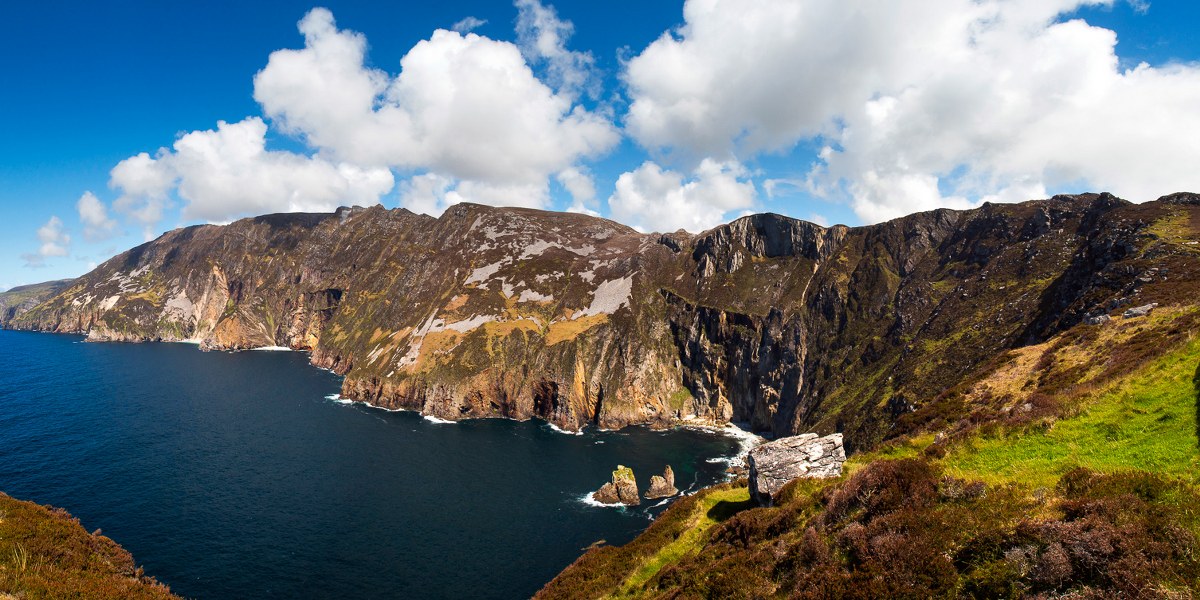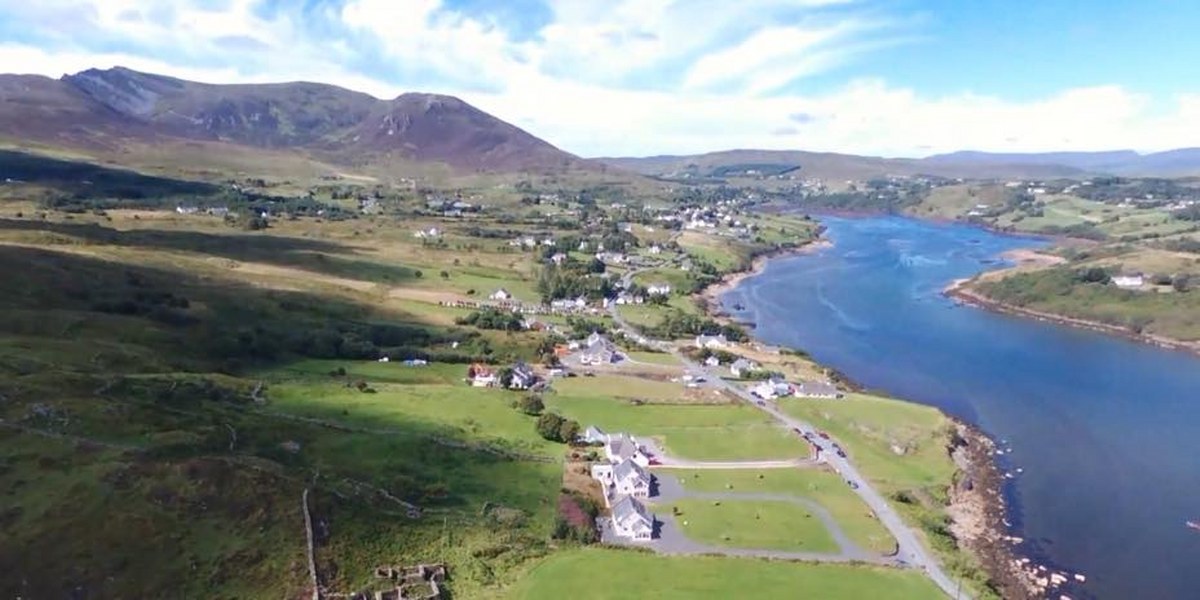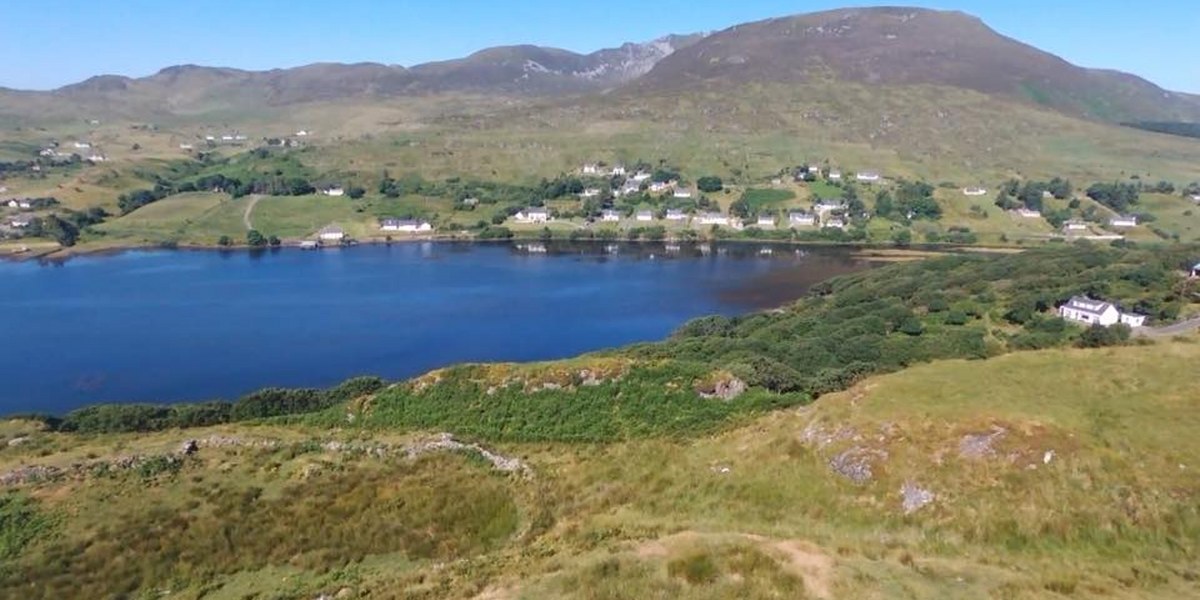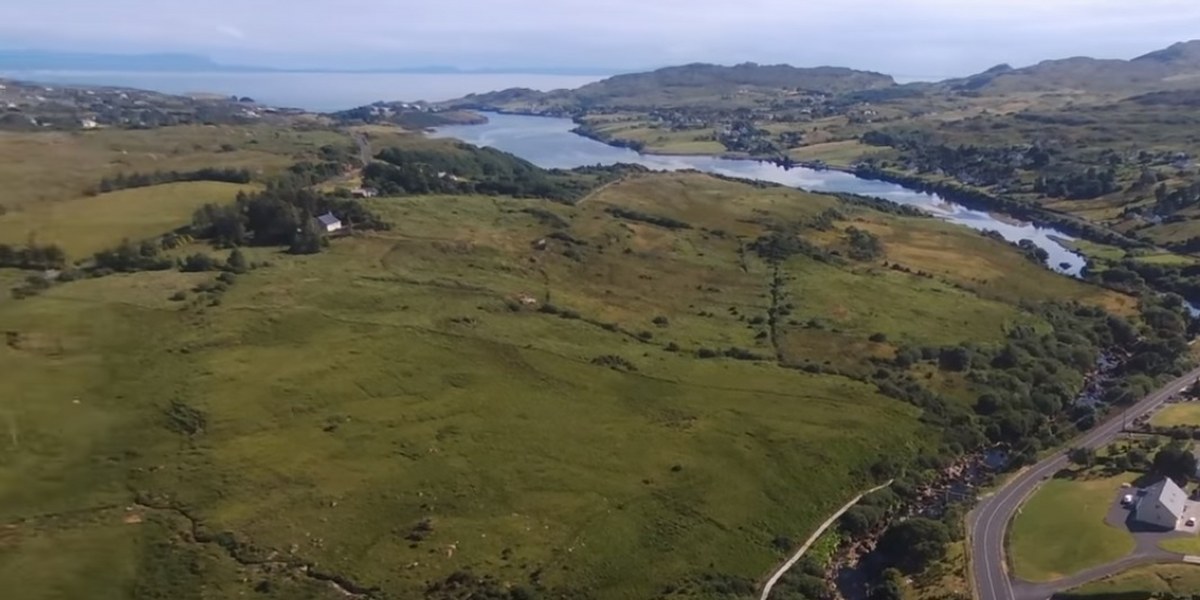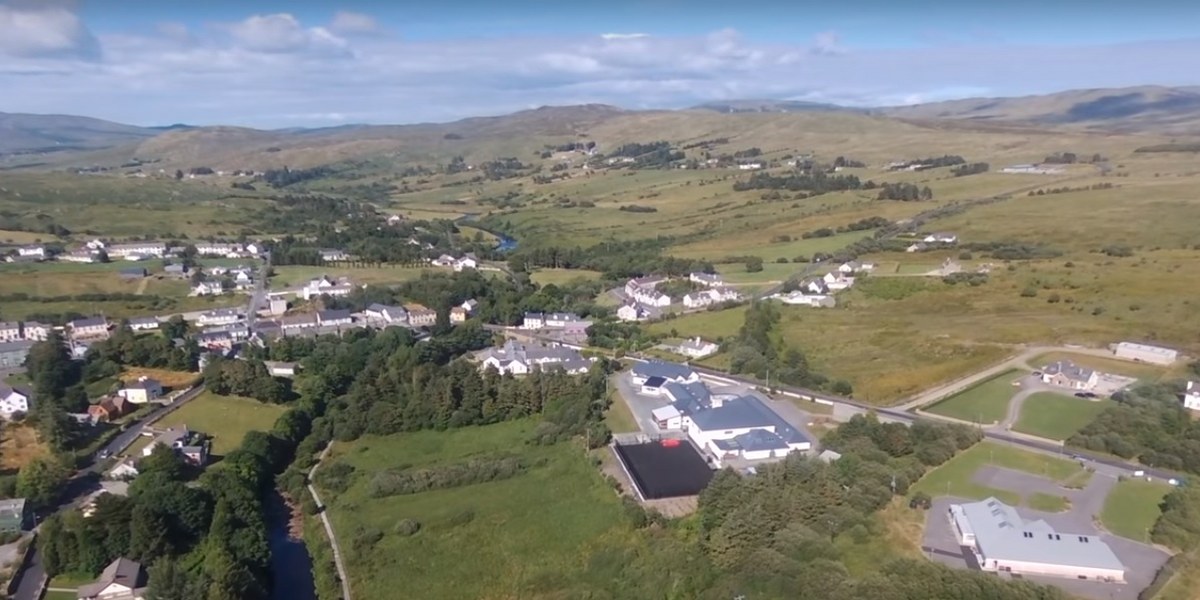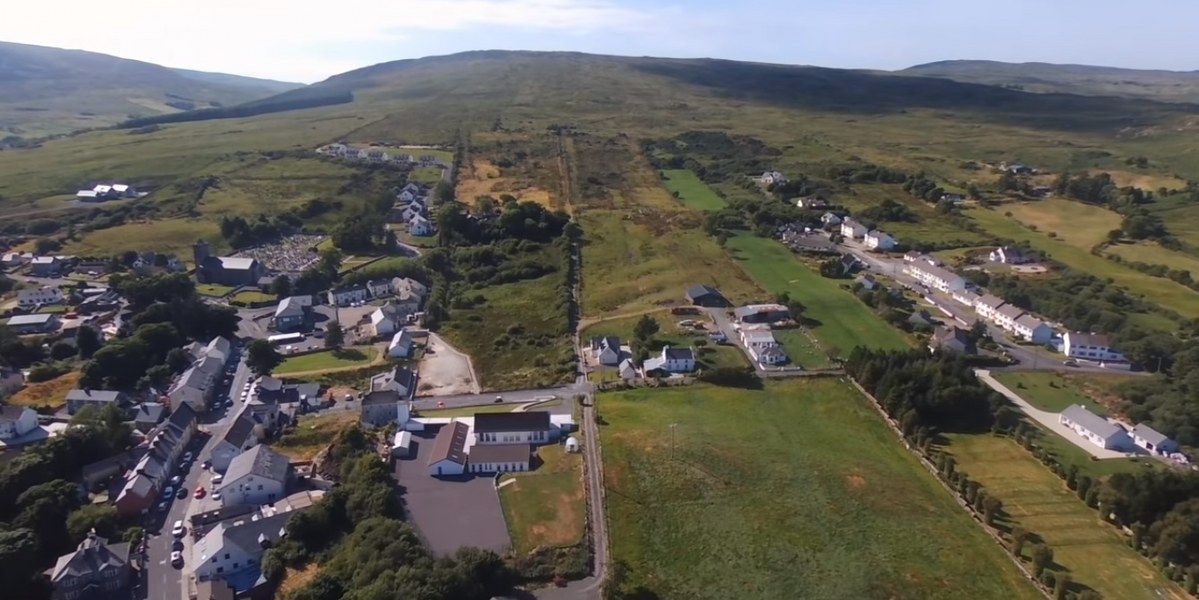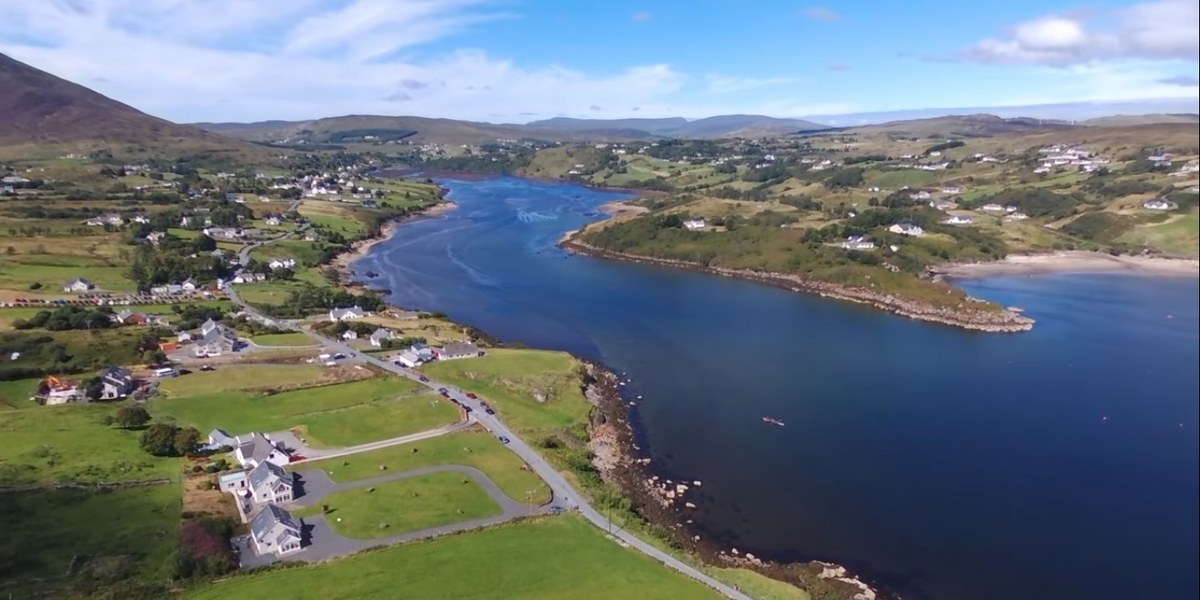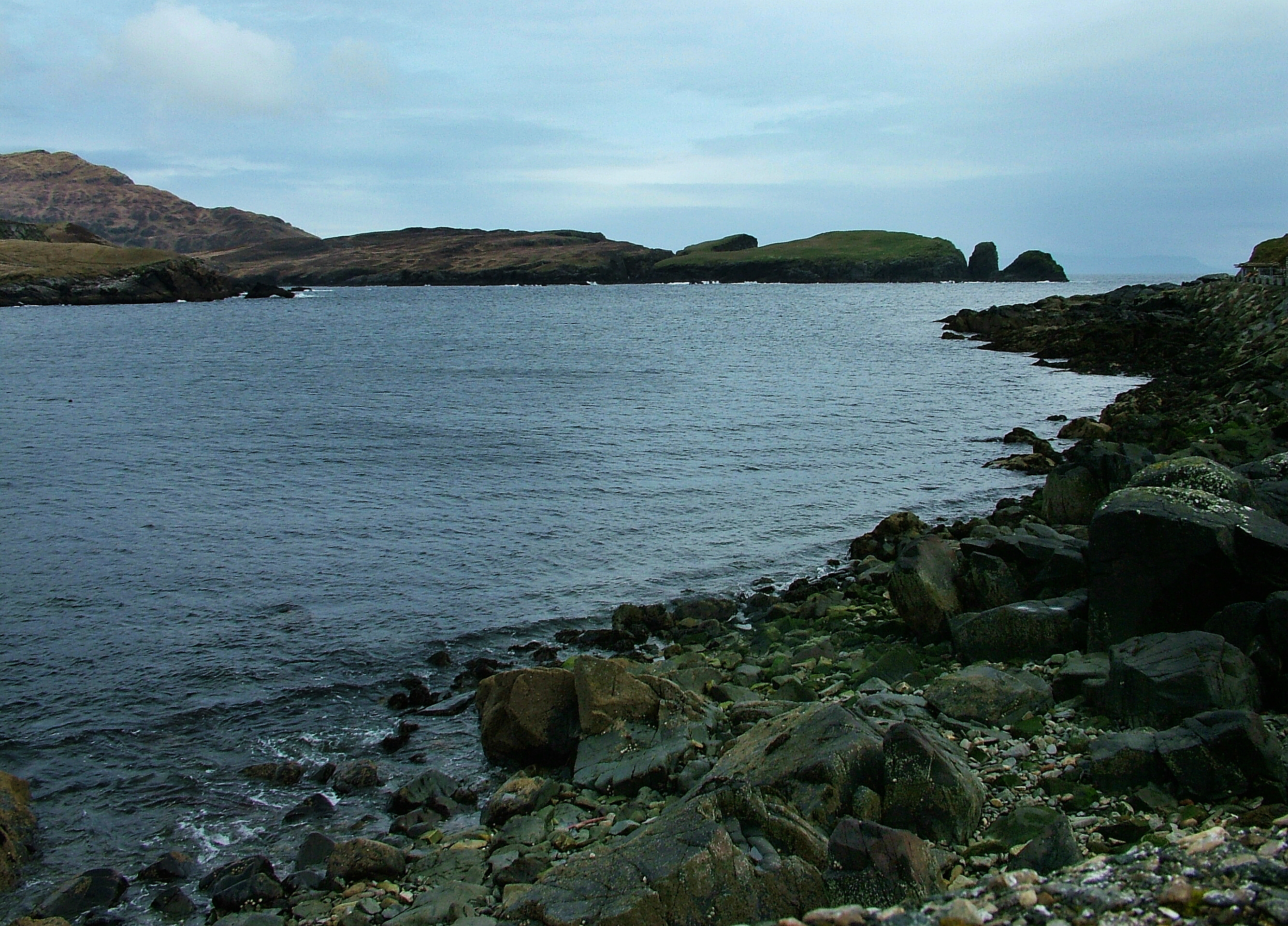
For the naturalist, this area of Donegal contains a rich and varied series of habitats. These include mountains; moor land, bog, lakes, sand dunes and sea cliffs, each of which contains its own unique flora and fauna.
On the rocky seashore there are species which can survive salt spray generated by sea storms. A colourful cushion forming plant is the beautiful sea thrift (ameria maritima). Other plants to be seen on the shore include sea rocket (cakile maritima) and the yellow flowered kidney vetch (anthyllis vulneraria). Depending on the movement of the tides brown, green and red, algae can be seen in the rock pools, including edible seaweed known as carrageen moss (crondus crispus). On rocks and stones throughout the area many crustose and bearded lichens are seen, some of which have been used in wool dyeing.
The shifting sands blown by Atlantic winds are stabilised into large sand dune complexes by the coarse and spiky marram grass (ammophila arenuria).
Rich colourful pastures and meadow abound in the area on the lower parts of the valleys. Grasses are common and in some fields a sheet of blue colouration is added by the flowers of the bluebell (errdymion non-scriptus) especially in May and June.
Fuchsia (fuchia magellanica) is common in the hedgerows along with the fronds of ferns such as bracken (pteridium aquilinum) and the royal fern (osmunda regalis). Along the boggy mountain lake shores plants such as white-water lily (nymphaea alba) pondweed (potamogeton species) float on the water surface while water rushes (scirpus lacustris) emerge above the water to form reed beds.
The bogs or peat land of Carrick are surprisingly rich in wildlife and blanket much of the landscape of the area - their formation dates back 4000 years. At this time the climates became wetter and led to widespread water logging of soils. This water logging combined with a lack of oxygen prevented rotting of dead plants, with the result that acid peat accumulated. This type of blanket bog along the Atlantic coast of Ireland has a very limited distribution through the world, making it of international importance and unique in Europe.
Birdlife
Despite the limited vegetation, over one hundred species of bird can be seen in the Carrick area we can divide their habitats into coastal, moorland and lowland coastal species -all species of gull common to Ireland are found here. There is an abundance of black guillemot and the curlew is very common in wintertime plentiful supplies of gannets can be found out at sea and there are breeding colonies further north the peregrine falcon is now a rarity, but can be found on occasion.
Moorland species - typical moorland species include the extremely common meadow pippits, golden plover, ravens, hooded crows and the occasional red grouse.
Lowland species - it is in this category that the sparse vegetation has the greatest effect, there are very limited hedgerows to give cover, but, where these exist a wide variety of species can be found. The most common are the blackbird, thrush, willow warblers, robin, etc. seasonal migrants: perhaps the most interesting aspect of bird life in the area is the variety of seasonal migrants the most popular is the cuckoo, arriving in mid-April wheatears arrive a month earlier and the swallows also in April.
Winter migrants include the whooper swans that decorate our lakes from October to April the white fronted goose is less common but not a rarity.
We find the redwings and fieldfares in the winter pasturelands unlike many parts of Europe, the birdlife of Carrick - in terms of species and numbers - remains relatively constant however, over the last decade, numbers of several migrants have fallen, especially notable is the (almost) complete extinction locally of the corncrake.
Taken from archive carrickonline by Ciaran Cunningham

